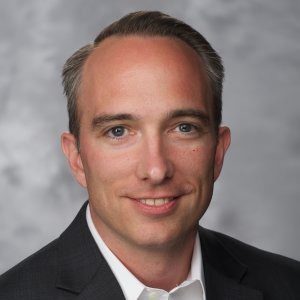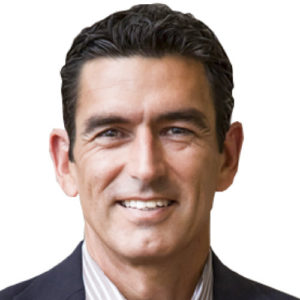The workforce of the future will be more agile, more focused on projects and will thrive in an environment where employees are given opportunities to be creative, inspired and fulfilled.
These are the predictions shared by a selection of the Top 100 HR Technology Influencers of 2022, HRE’s annual listing of the innovators who research, create, select, purchase or implement innovative HR solutions inside forward-thinking firms, which is being released today. These experts know firsthand that change is not just coming—in some cases it’s already here.
New: See all of the 2022 Top 100 HR Tech Influencers here.

Ultimately, the basic structure of work is poised to change thanks to the fallout from COVID-19, particularly the remote and hybrid work models that were implemented over the last two years and the Great Resignation that became a reality last summer, according to Influencer Ravin Jesuthasan, author of Work Without Jobs: How to Reboot Your Organization’s Work Operating System, which he co-wrote with Influencer John Boudreau.
Finding success in this new world comes down to flexibility and agility, says Jesuthasan, a futurist and global thought leader at Mercer.
“Companies are starting to implement a plurality of means that connect talent to work,” he says. “We’ll continue to have jobs, but more and more work is going to be freed from that construct of a job.”

Boudreau, senior research scientist and professor emeritus at the University of Southern California’s Marshall School of Business, believes that jobs will be what he calls “atomized” or broken down into a set of skills. This allows HR and supervisors to create assignments on a project basis for employees eager to move away from their repetitive work duties. In turn, he says, “businesses will be agile, empowered and then boundary-less in the sense that the boundaries of the organization, employment contracts, job descriptions and the degrees needed, will become a gray area.”
Related: Looking to slow the Great Resignation? It’s time for a skills revolution
In seeking clarity in this gray area, Jesuthasan predicts employment in the workforce of the future will fall into one of three categories: fixed, flex or flow.
Fixed jobs will resemble traditional jobs: Employees are hired for a specific role with little room for advancement, like most positions today. Flex or flexible jobs will offer opportunities to use or, as Jesuthasan says, “express” their skills in other parts of the company.
“The third dimension is where the talent is free from a job,” he says. “They may still be employees, but they increasingly flow to work assignments and gigs as they become available.”

The days of mapping one person to one static job description are over, agrees Influencer Katy Tynan, principal analyst, EX and future of work, at market research firm Forrester. “Employees will become more peripatetic, taking their skills to contribute to project-based work and swarm teams, rather than sitting still in a fixed role,” she writes in her blog.
The workforce of the future is here
This future of workforce transformation is already happening.
In their book, Boudreau and Jesuthasan write about the steps IBM, DHL and Unilever are taking to prepare their organizations for the post-pandemic future. IBM, in fact, began considering and hiring for so-called “new-collar jobs”—tech roles that did not require college degrees—as early as 2017 under former CEO Ginny Rometty, they write. Since then, those efforts to move to a skills-first approach have grown, fueled by the pandemic. And efforts to uncouple IBM jobs from work are also taking shape, driven by its Global Workforce Initiative, which wanted talent to move easily across business units and projects.
Related: Requiring college degrees: a sign of a ‘lazy employer’?
Another company profiled by Boudreau and Jesuthasan is Providence Health Systems, a Catholic, not-for-profit health system based in Renton, Wash. According to Influencer Greg Till, its chief people officer, Providence has implemented a workplace strategy he calls “the 4 Ds.” This means that the healthcare firm looks to:
* Deconstruct the work,
* Digitize the experience,
* Deploy talent effectively, and
* Diversify its sources of talent.
“We’re on the path to significant transformation in this area,” says Till.
Providence Health’s workforce strategy includes offering debt-free education and technology—such as using voice recognition to enter patient notes into electronic medical records, delegating administrative roles to other personnel and streamlining the distribution of pharmaceuticals—to simplify employees’ work duties. “I don’t know of an organization that has deconstructed everything and moved completely to a skills-based talent system,” he says. “But several organizations, including Providence, are on the path to significant transformation in this area.”

Upskilling’s moment has arrived
Drafting a flexible workforce of the future on paper is one thing but putting it into reality will take a new mindset for the C-suite, managers and employees. In their book, Boudreau and Jesuthasan provide four principles for the “new work operating system,” as they call it. 1. Start with the work or tasks, not current jobs. 2. Combine people and automation. 3. Consider all types of work “engagements,” including traditional employment, gig, freelance, project-based, etc. 4. Allow employees to “flow” where they are needed, releasing them from fixed roles.
As much as executives and supervisors must embrace a new way of interacting with workers, employees must also have the skills that will allow them to enter new roles—and recruiters must look for those skills when hiring new employees.

The typical job description is outdated, subjective, unrealistic and focused on a single purpose, according to Influencer Stacia Garr, principal analyst and co-founder of RedThread Research.
“Skills, on the other hand, are current, objective, specific and relevant, and simple,” she says, describing how job descriptions should instead be focused. “Skills are also multi-purpose, in that they can be used to inform decisions around compensation, training, internal mobility, as well as hiring.”
Influencer Hicham Zahr, head of insights and analytics at Eightfold, agrees that organizations will become more skills-based as they future-proof their workforces. Specifically, the focus on digital-related skills will increase across the organization, not just in such typically digital domains as engineering. This includes a greater emphasis on enabling HR departments with people analytics skills, he says.
“While most people are aware of the benefits, upskilling and reskilling programs will become not only the norm, but their effectiveness will make or break an organization’s ability to adapt,” says Zahr.

Soon, upskilling programs will move beyond limited segments of the workforce. “As organizations implement technology to scale their skilling initiatives, skills acquisition will be democratized, with everyone in the organization able to develop their skill sets on a regular basis,” says Zahr.
Related: How upskilling and learning can help neutralize the Great Resignation
Influencer Al Adamsen, founder and CEO of People Analytics & Future of Work, agrees that upskilling will accelerate in the coming months. The workforce of the future will be learning and adapting at a pace that will normalize what is now perceived as disruptive, such as changes in hardware, software and related processes, he says.
“In other words, jobs will be less about static responsibilities and more about the contributions necessary to achieve micro-goals,” says Adamsen.
Such technologies as artificial intelligence and talent marketplace solutions will fuel this new fluid workforce as well. “Automation will both augment workers and take the most predictable and repetitive tasks off their plates,” Tynan predicts.

This means that getting an accurate picture of employees and their skill sets has never been more important. This is a challenge because HR leaders and even managers are unaware of the talent hidden in their workforce.
Jesuthasan recalls a statistic by the World Forum: Typical employees say they have an average of seven skills, most of which are technical, but when algorithm-driven talent marketplace solutions examine an employee’s experience, past projects and education, that skill set grows to 22 skills.
“By moving to a skills-based ecosystem, or a capability-based architecture,” says Jesuthasan, “talent is able to more easily flow to where the demand is based on technology that matches their skills to work, as opposed to their job titles.”
Register here for the 2022 HR Technology Conference in Las Vegas on Sept. 13-16.

